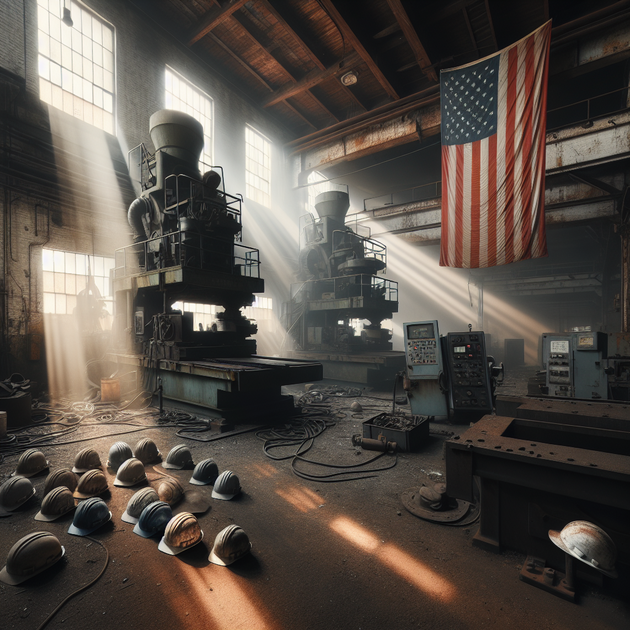What happens when a government tries to protect an industry but ends up hurting its own workers? That’s exactly what played out with the George W. Bush administration’s 2002 steel tariffs—an economic move that ended up costing far more American jobs than it saved.
Why Were Steel Tariffs Imposed in 2002?
In early 2002, heavy tariffs were slapped on imported steel. The main goal was simple enough: shield struggling American steelmakers from a flood of cheaper foreign competition and hopefully save or create blue-collar jobs in the process. It sounded like a straightforward solution to a tough problem. But as the Council on Foreign Relations explains, these kinds of policies can have ripple effects that are easy to overlook.
What Really Happened to Steel Jobs?
The expectation was that these new steel tariffs would boost employment in towns where mills were closing or cutting back. In reality? There was little evidence of any sustained increase in local employment within the U.S. steel industry itself after the tariffs took effect.
- Steel production didn’t surge as hoped.
- Job growth in major U.S. steel towns remained flat or even declined.
- Once the tariffs were lifted again (less than two years later), no long-term gains had materialized.
A review by Brookings Institution found that most of the predicted benefits never showed up—and U.S. consumers faced higher prices for cars, appliances, and other goods made with steel.
The Hidden Cost: Jobs in Steel-Using Industries
While the direct impact on steelworkers was disappointing, there was a much bigger downside lurking elsewhere. American companies that buy large amounts of steel—think car makers, construction firms, and appliance manufacturers—suddenly saw their costs shoot up because of these tariffs.
- Many U.S. manufacturers had to pay more for raw materials.
- This made their products less competitive both at home and abroad.
- Some companies cut back production or laid off workers as a result.
- The negative impact lasted for years—even after the tariffs were gone.
A widely cited U.S. International Trade Administration study estimated that about 200,000 jobs were lost in industries using steel—far outweighing any temporary gains in the domestic steel industry itself.
A Story From Middle America
Consider what happened in places like Michigan or Ohio during this period. One auto parts supplier based outside Detroit found its costs climbing almost overnight after the new tariffs kicked in. The company couldn’t pass all those extra costs onto customers without losing business to foreign competitors who didn’t face those same price hikes. Within a year, this supplier had to lay off dozens of skilled workers—good-paying jobs that never came back even after the tariffs ended.
Lessons Learned from the Steel Tariff Experiment
So what can we take away from this episode? Here are some key points about how broad economic policies like these play out:
- Unintended consequences matter: It’s easy to focus on one industry and miss ripple effects elsewhere.
- Supporting one group can hurt others: Policies designed to “save” jobs may end up costing many more somewhere else.
- Short-term fixes usually aren’t enough: Lasting solutions often mean addressing root causes like global competition and technological change—not just raising trade barriers.
- The data is clear: Multiple independent studies—including those from government agencies and economists at MIT—have reached similar conclusions about the net negative impacts of these kinds of targeted trade policies (MIT Sloan School of Management).
The Bigger Picture on Economic Policy Choices
The story of the 2002 steel tariffs is a cautionary tale—one that pops up whenever talk turns to new trade restrictions or protectionist measures today. It shows how even well-intentioned policies can end up hurting many of the very people they’re meant to help.
What do you think? Should governments step in with protections like these despite potential side effects—or is it better to focus on helping workers adapt instead?

Leave a Reply